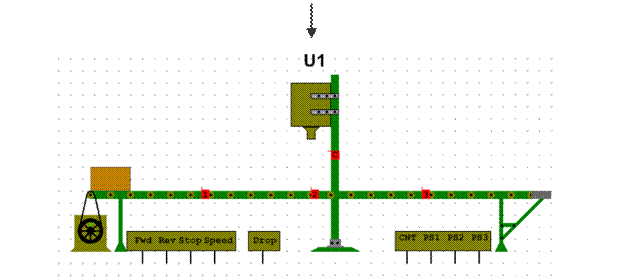Parallel Busbar System
UNIT 13 EFFECT OF LOAD ON AC GENERATOR
AIM OF THE UNIT:- to understand effect of load on ac generator
TASKS 1 Do your best to answer the brainstorming question. 2 Read the text for general understanding. 3 Make up questions to the text. 4 Find the sentences with the new words in the text. Give the Kazakh or Russian equivalents of the words. 5 Write sentences with the new vocabulary. 6 Make up exercises as in the UNIT 2page 210 (Exercises for better remembering the topic).7 Speak on the topic. Given schemes will help you to remember and understand the topic. 8 Find more information about the topic and make up a project work on the topic.
1 Is there distortion of the magnetic field with the no load condition? Any increase in the resistive load, also referred to as REAL LOAD, causes the rotating field to twist against the direction of rotation.As a result there will be a tendency for the speed and frequency to reduce, the induced current opposes the motion producing it (Lenz's Law), also the terminal voltage falls slightly due to the IR loss in the stator windings. An increase in the prime mover torque will regain the original speed of rotation and therefore the original frequency while an increase in the field current maintains the output voltage. Inductive Load:An increase in the inductive load, also referred to as REACTIVE LOAD, results in a weaker rotating field. The resultant effect is a considerable loss in the total field strength and a falling terminal voltage. Increasing the field current restores the terminal voltage, but the increased field current causes an increase in the rotor temperature. Capacitive Load:Increasing the capacitive load or reactive load results in a stronger rotating field. The rotor field and the stator fields are additive giving a stronger rotating field and therefore a higher output voltage.Aircraft a.c. generation systems normally have a lagging power factor, and inductive loads. Further Parallel Operation:Normal operation is with the main generators connected to their individual busbars by their own GCBs which in turn are connected to the tie busbar via the BTBs. In this configuration the generators are connected in parallel and are sharing the loads equally. The APU can power all the bus bars via the BTBs and the SSB (split system breaker) with the assistance of some load shedding. One external power supply can also supply all four buses, but if a second external power supply is switched on the SSB is opened to prevent parallel operation. The APU and external power are also prevented from being connected together in parallel. Requirements relate to:- Frequency:The frequencies on each side of the BTB must be within specified limits. Frequency difference must be less than 6 Hz. Voltage:The voltages on each side of the BTB must be within specified limits. Voltage difference must be less than 10V. Phase Angle:The phase angles on each side of the BTB must be within specified limits. Phase angle difference must be less than 90 degrees. Phase Rotation:The phase rotations on each side of the BTB must be identical.
Should two or more generators be connected in parallel with the frequency, voltage or phase angle outside the specified limits, shock loads will be imposed on the CSDs.
|






